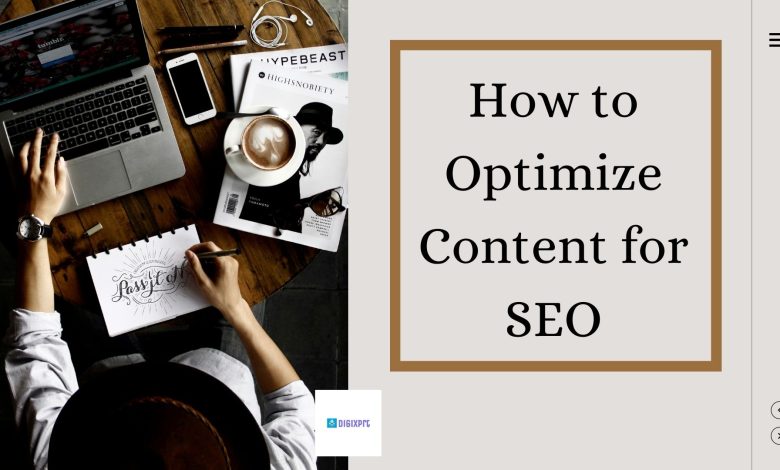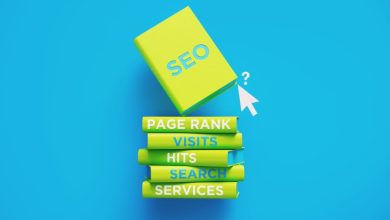How to Optimize Content for SEO

Search engine optimization (often known as SEO) is a dynamic field. But, despite all of the recent changes, one thing has stayed constant: the significance of content in SEO. Content writing plays a vital role in almost every digital marketing services. Content and SEO are inextricably linked. People use search engines to discover answers to their inquiries, and search engines return the most relevant results they can. It doesn’t matter if the first search result is a blog post, a YouTube video, or a product description; it’s all content. There is a complex relationship between content and SEO, and understanding the nuances can be challenging. This guide delves into that connection and offers practical advice on how organisations may use content to aid their SEO efforts.
The Relationship between SEO and Content Marketing
To put it another way, great content is the foundation for SEO success. All of your other SEO efforts will be built on top of high-quality, original content. That’s why the Periodic Table of SEO Success begins with the “elements” of content, with content quality being the most important.
What is SEO Content?
To comprehend what SEO content entails, consider the phrase in two parts:
-
The first part, known as “SEO,” is the act of optimizing your website and content so that it appears higher in search engine results pages for specific search terms.
-
The second portion, “content,” refers to any online information that can be indexed by search engines. Website material, blog articles, photos, graphics, and videos are all examples.
As a whole, SEO content refers to any information written with the goal of improving search engine results and, as a result, increasing traffic to your website. Organic search results are displayed by search engines based on the relevance and authority of a web page. The frequency with which you employ specific keywords and phrases within the text of a web page determines relevance, whereas the quantity of trustworthy backlinks pointing to that page determines authority. Your material should be organised logically, contain important keywords, and be created with your audience in mind to make it more SEO-friendly as one of the most significant digital marketing services is SEO.
On-Page Content Optimization
SEO and good content go hand in hand. You won’t have much success with the other if you don’t have the high-quality content that search engines want — your SEO ranks. And audience are likely to be low if you don’t have the high-quality material that search engines want. At the same time, even the best content won’t help you if your target customers can’t find it when they’re looking for it. That is why it is critical to be able to generate SEO-friendly content that people like reading on a regular basis. With that in mind, here are a few pointers and best practices for creating excellent content and optimising your SEO.
-
Concentrate on keywords, But Not Excessively
Keywords have a place in your SEO strategy; just make sure you utilise them intelligently and naturally in your content. And attempt to employ keyword phrases instead of single keywords. Although including a keyword phrase in your title may not make for the most thrilling or funny headline, it will increase the likelihood of your piece being seen by your target audience.
-
Make Good Use of Headings
Headings are an important part of SEO, yet they’re often disregarded. Header tags are HTML tags that range from H1 to H6, and they’re used to highlight and structure an article or blog post. When used correctly, headings can aid Google in parsing the core theme of longer articles.
For example, each page should include an H1 tag, but only one should be used. Multiple H1 tags might cause search engines to become confused since they imply that the material is divided into several major subjects. Also, don’t use the same header text for each page.
-
Optimize the Length of Your Posts
Longer articles are preferred by Google. The average length of a first-page Google search result, according to one study, is 2000 words.
While it isn’t required to publish an article of that length every time you update your blog. You’ll generally have better luck if you do so on a regular basis. Using bullet points, subheadings, and lists to break up long pieces into manageable bits for your readers will help avoid the dreaded “wall of text.”
-
Use Phrases That Are Specific to Your Location
People usually check for local companies when conducting online searches. This is especially true when they’re looking for something on their phones.
If you have a local business, make sure your keyword phrases include geo-specific terms. So that your content appears prominently in those searches. If you include these location-specific keyword words in your titles and H1 tags, your local SEO will increase quickly.
-
Optimize your images: Users are less likely to bounce if a site loads quickly. As a result, load time is an algorithmic factor that influences your website’s ranking in search engine results. Images are frequently the major contributor to website load times, so having reduced image file sizes is advantageous.
-
Create engaging meta descriptions: Visible meta descriptions are 148-155 character snippets that appear alongside title tags in search engine results to summarise the content of a webpage. As a result, optimising these descriptions is critical for successfully describing your site to viewers and capturing their interest. While these have no direct effect on your rankings, they do have an indirect impact due to human user behaviour.




